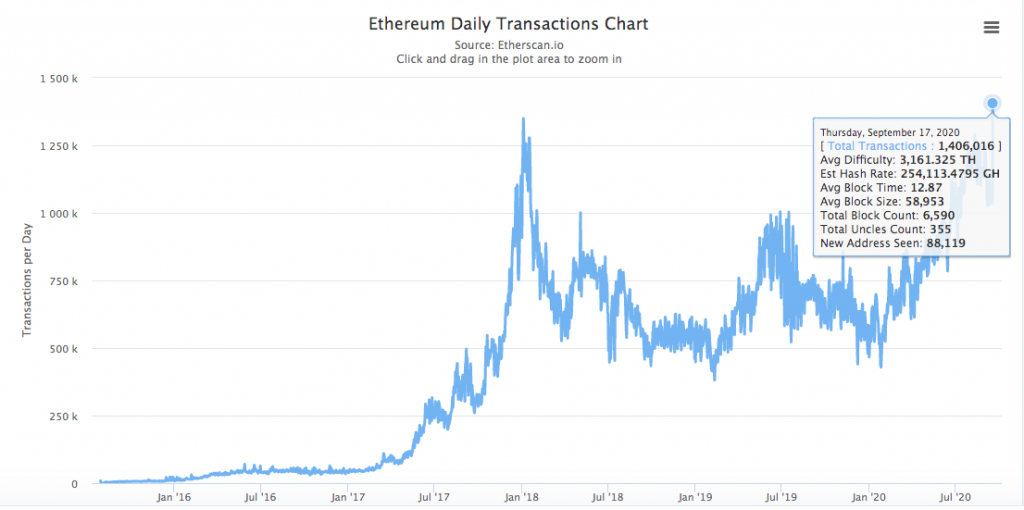
October 21, 2020
by Peter Seed

The State of Ethereum as of October 2020.
The Summer of DeFi
On October 14, 2020, I attended the invest: ethereum economy conference sponsored by CoinDesk.
Although we did not gather in the Golden Gate Park, there was a lot of talk about the Summer of DeFi. Everyone seemed to agree that due to the popularity of DeFi, Ethereum gas prices were too damn high!
There were several scaling solutions presented at this conference.
Proof of Stake Roadmap
Vitalik Buterin summarized the state of Ethereum’s planned upgrade from “proof of work” to “proof of stake” by giving a full history of how Ethereum has progressed over the years. Ethereum 2 will vastly increase the transactional capacity of the public Ethereum blockchain. Once in place, it is expected to handle up to 100,000 transactions per second – supported by side chains also referred to as parachains. There will be three phases of implementation over a two-year period.
-
- Phase 0: (Q4 2020) – Launch of the Beacon Chain
- Phase 1: (2021) – Integration of Shard Chains controlled by the Beacon Chain
- Phase 2: (2022) – Full migration of Ethereum 1 chain into the Ethereum 2 chain
More detail on the roadmap is here.
Vitalik dropped two other milestones in the mix that gave us something to explore right now:
-
- Roll-ups (ZK roll-ups or Optimistic roll-ups)
- EIP-1559
Roll-ups
Roll-ups address scalability by deploying side chains. ZK roll-ups are feeding into the main net, already. So that was encouraging. After researching some solutions, my walk-away was that these bolt-on side chains will add complexity to any development project. Having said that, side-chain communities will likely develop around specific fintech operations such as robo staking.
As far as roll-up infrastructure goes, Polkadot seems interesting – especially when used in conjunction with Moonbeam or the Optimum Virtual Machine. Polkadot is still on testnet but will be live soon.
The Optimistic roll-up is worth mentioning, as well. This scheme relies upon game-theory-driven incentives to support validation between layer 1 (on-chain) and layer 2 (off-chain). Blockchain applications are essentially split into two components. Layer 1 manages the data. Layer 2 handles the computation. This scheme vastly speeds up computing power of smart contracts.
EIP-1559
The most exiting presentation was the upgrade project called EIP-1559. This upgrade would be within the Ethereum protocol, thus, no bolt-ons. Once implemented, it will restructure how gas fees will be set in conjunction with control of block sizes. In other words, prices and quantities will both be be controlled. There will also be a relief-valve mechanism that reverts to the current pay-to-play auction scheme when there is block congestion is detected. I will spare you the details of exactly how that will work. Suffice to say, it will be very welcome upgrade.
My read of EIP-1559 is that it is akin to an automated monetary policy within the Ethereum infinite machine that will provide a higher level of social economic efficiency.
Here is a good summary of EIP-1559.
Here is a deeper explanation.
Taking all the activities discussed at this conference into account, one analyst pointed out the all the Ethereum initiatives point to a steady decrease in the liquid supply of Ethereum. In the future, a sizable percentage of all Ether will be staked or burned – at least much more than it is now.
We all know from economics 101 that decreasing supply of a commodity will cause prices to rise. UpTrade’s Blue Horseshoe foresees a bull market for Ethereum capped by the holy grail of Ethereum 2.0.



